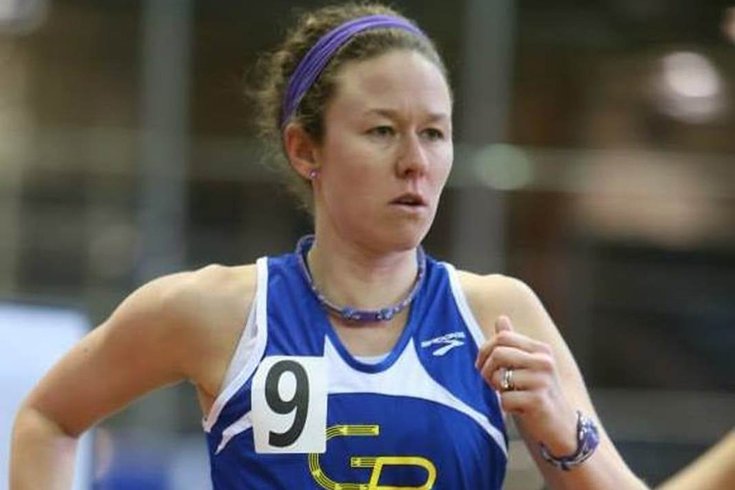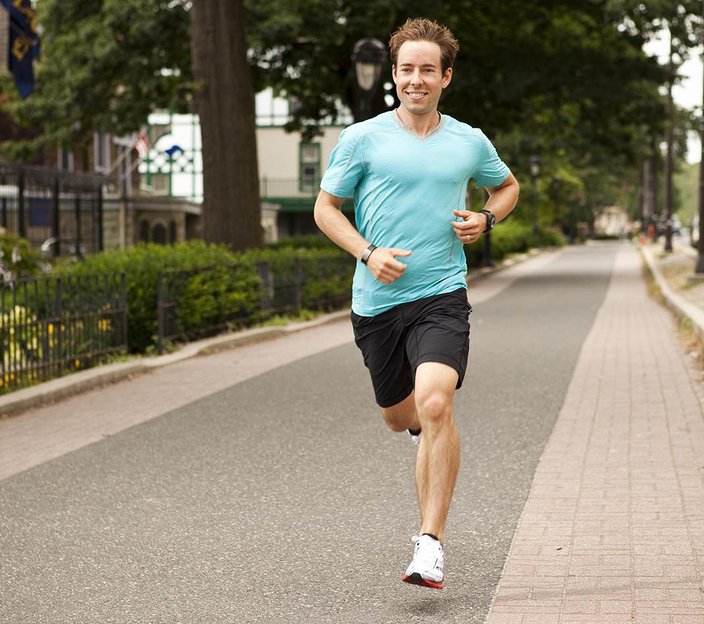
July 11, 2016
 Photo courtesy/John Nepolitan
Photo courtesy/John Nepolitan
Meghan O'Toole DeCarlo, a competitive runner from northern New Jersey, is an advocate for heart rate training through all seasons. She ran a personal best in the marathon last year, utilizing heart rate training.
Record high temperatures are forcing many of Philadelphia’s athletes to rethink their summer training.
Running in the heat isn’t simply more demanding; it’s also more dangerous. New research suggests runners are 10 times more likely to die from heat stroke than from cardiac arrest. Some experts contend cardiac arrest still poses a greater threat. Yet, whether overexertion more likely leads to heat stroke or heart attack, the takeaway for summer runners is clear: in order to beat the heat, you must slow down.
But how slow is too slow? How fast is too fast? It can be surprisingly tough for even experienced runners to strike a balance between training efforts that are safe and still beneficial. As movements like Run 215 inspire droves of Philadelphians to make the trek from Couch to 5K, more inexperienced runners risk suffering serious heat-related health consequences.
As the heat and humidity fluctuate so widely throughout the summer months, how can runners reliably gauge what pace to keep on any given day? The answer, for many elites and rookies alike, is heart rate training. The method is simple: determine your safe and effective heart rate zone and stick to it, no matter the weather, whether you’re feeling revved up or run down.
There are several strategies for determining your ideal training heart rate. One of simplest and easiest to remember is the Maffetone Method, also known as the 180 Formula [180 minus your age], which 2014 National Women’s 50-Mile Champion Larisa Dannis utilized to transform herself from a recreational 5K racer to professional ultrarunner in just four years. A plethora of heart rate watches to fit every wrist and budget can help runners stay on track.
John Goldthorp, 38, is an RRCA certified running professional and ACE certified personal trainer, who offers one-on-one coaching for runners of all abilities in Center City Philadelphia. A competitive runner himself, he continues to achieve impressive new personal bests. Last year, at age 37, he ran his fastest mile ever in 4:43.
Goldthorp regularly utilizes heart rate training, especially during the sweltering summer months.
“Your heart rate is a reflection of how much stress your body is under. The hotter the temperatures, the higher your heart rate will be relative to pace. That’s because, when it’s hot out, the heart is not only pumping blood to the working muscles; it’s also pushing blood from the core to the body’s exterior for cooling,” he said.
John Goldthorp, 38, a running professional and certified personal trainer in Center City Philadelphia, regularly utilizes heart rate training, especially during the sweltering summer months.
The bad news: Whether you’re a novice runner excited to test the limits of your newfound fitness, or an advanced runner chasing faster times, you’re less likely to shatter records in the summertime.
The good news: Run slower, according to your heart rate, throughout the summer months, and you’ll reap additional fitness benefits, come fall.
“A positive way to look at this is that, when you do a hard 'tempo' run in the heat, you get the cardiovascular benefits of the session, but, since your pace will be slower, your risk for musculoskeletal injury decreases,” Goldthorp said.
Meghan O'Toole DeCarlo, 35, a competitive runner from Saddle Brook in northern New Jersey, is another advocate for heart rate training through all seasons.
In addition to keeping her safe in the heat, staying in her target heart rate zone during the bulk of her training helps her stay injury-free year round. DeCarlo said she runs the bulk of her miles at 146 bpm, or 75 percent of her maximum heart rate (195), which she achieves at peak speed during a race.
“It's easy to ‘feel good’ in training and start picking up the pace, but if my heart rate starts to get higher, then an easy run turns into a hard workout and I'm not recovering the right way," she said. "You just have to be patient with it. I ran a personal best in the marathon last year, utilizing heart rate training.”
Both Goldthorp and DeCarlo agree heart rate training isn’t the be-all and end-all, but it works well in conjunction with other prudent running practices.
Goldthorp said he believes the two best safe summer running strategies are to show up “well hydrated and mature.”
“We've all been that stubborn runner who has a plan and will stick to it no matter what, but that simply does not work," he said "Have Plan B or Plan C ready. Maybe it's best to slow the planned pace down. Maybe it's best to shorten the workout. Maybe you're better off trying again tomorrow.
"If you absolutely have to bang out a 5-mile fast tempo run when it’s 100 degrees, then get it done indoors.”
 Photo courtesy/Dominic Episcopo
Photo courtesy/Dominic Episcopo